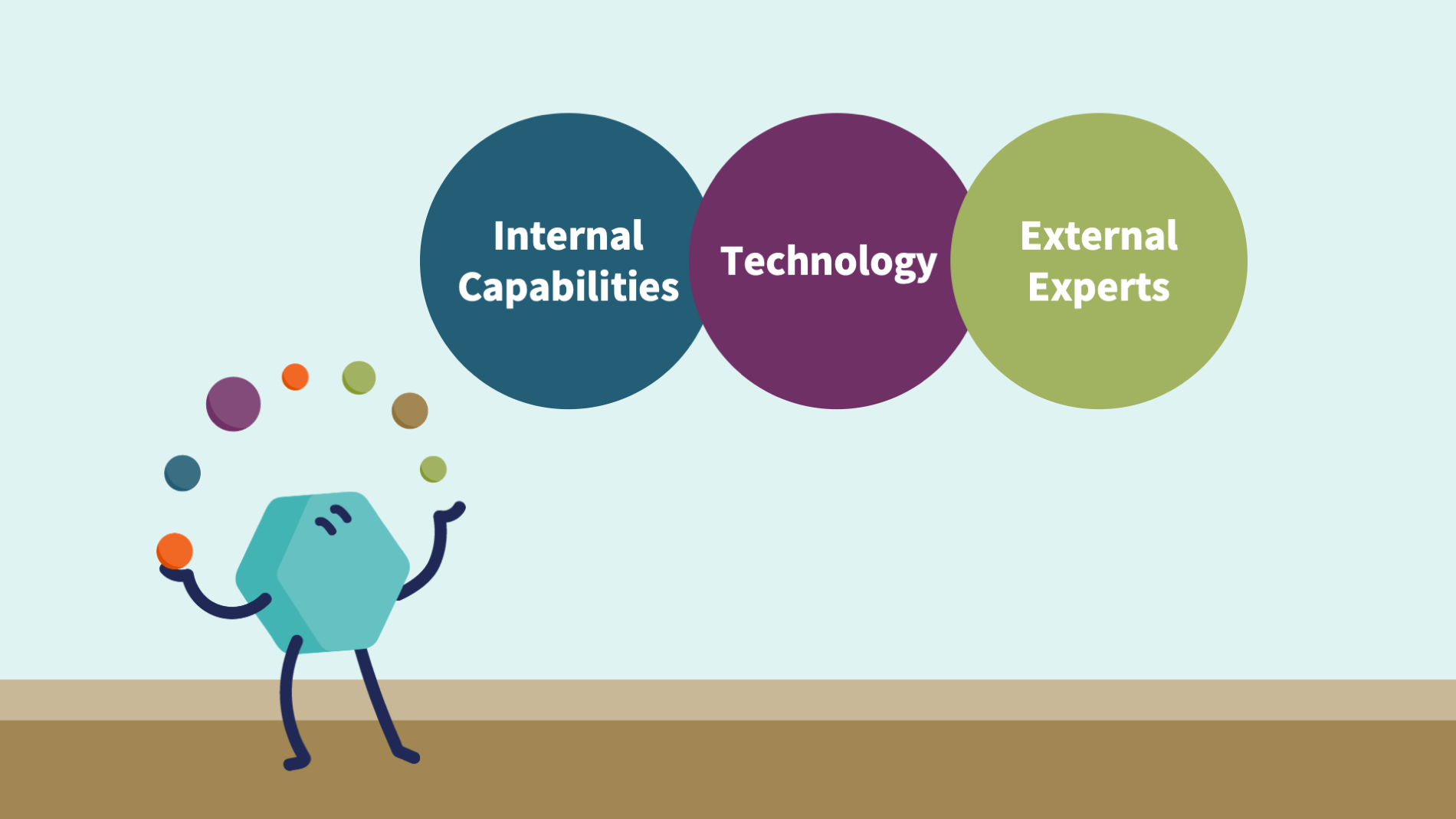Owning the Overlap: Where Strategy, Tech, and Expertise Converge

by Sue Nemetz
Years ago, I remember reading a book about strategy where distinctions were made in companies who differentiated their offering (strategy) based on a unique product, operational efficiency, or relationships and service. The examples of this differentiation that were given included athletic shoes, McDonalds, and Nordstroms.
As I grew in my own experience as a leader in biopharma, I saw those distinctions as Process, People, and Product. With this, I would encourage my team to focus on standardizing repeatable processes, defining processes where none existed, and ensuring that the talented people in the organization could grow in their careers which meant we had to build capabilities in each function and the company writ large.
A decade ago, as a seasoned consultant I watched internal commercialization teams struggle with not owning more of their planning success meaning they either missed the mark or had to engage consultants, my firm included, to do the foundational planning work. At the time, it seemed the following parameters were at play:
- Process was a bad word reserved for large bureaucratic corporate entities
- Innovative technology was less available beyond PPTX and Excel which were everywhere
- Some emerging companies had plentiful financial resources; some had none
- Consulting firms were incentivized to “retain” the institutional knowledge which created co-dependent relationships and prevented the building of internal capabilities
- The path to launch was relatively predictable—presuming the science was solid
- Then, as today, Biopharma companies often delayed hiring (building capabilities) as long as possible to ensure their drug worked and they had funding to carry them all the way to market on their own or with a partner
Today, I genuinely believe that the biopharma industry, particularly in the emerging sector, is poised to take greater ownership of the relationship between developing and optimizing internal capabilities, leveraging technology to accomplish more, and more effectively collaborating with external experts, such as consultants, service providers, and domain specialists, to address the complex challenges that hinder the path to the patient.
The essential truth is that a commercialization plan must still be built to address critical steps, drive internal alignment, and define the required resources. So, how can that be done if capabilities don’t yet exist? Make it up? Hire a consultant? Delay?
Enter the tried-and-true Venn diagram. In this illustration, let’s define the circles as:

Internal Capabilities Include:
- Internal skills and competencies as represented by individuals, functions, teams
- Processes and methodologies to achieve goals and deliver objectives
- Ways of working, culture, and approach to achieve the vision
External Experts Offer:
- Specialized knowledge, industry best practices, and unique skill
- Ability to provide both advisory and implementation support
- Creative talent, proprietary datasets, talent augmentation
Technology Could Offer:
- Software that accelerates planning, offers standardization, and a single source of truth
- Data analytics platforms improving decision-making
- Collaboration capabilities in a remote asynchronous knowledge worker world
The Last Decade (or Two!)
Historically, when technology was less available or not as user-friendly, and we, the biopharma industry, didn’t have the internal capabilities to drive commercialization, we often relied on external experts to do the most basic planning and critical strategic thinking on our behalf. Because we also didn’t have the technology to manage, update, and evolve the output from these experts, our dependence on them could overshadow our ability to own our processes and build in-house capabilities.

With the advent of novel planning tools like Corval, the evolution of technology, data analytics, and user-friendly cloud-based tools, we can build capabilities, trust our technology, and utilize outside experts to solve challenging problems that require expertise beyond our internal team.
We can re-orient our Venn Diagram to own our future.

The ideal synergy could exist where:
- Internal teams leverage technology and consulting insights effectively while building capabilities
- External consultants provide unique differentiated insights and support the use of novel technology solutions that enable the internal teams to become self-sufficient
The biopharma organizations build a sustainable competitive advantage and can replicate the learnings across multiple goals and initiatives Now that we’ve “seen” the possibilities that technology can offer in creating new collaborations and ways of working, we can move forward towards more strategic alignments, improved efficiencies, and transparency across functions.
Technology + Deep Industry Expertise + Actual Humans = Corval
Corval delivers the technology, expertise, and support biopharma teams need to navigate commercialization planning with confidence. Designed for companies at any stage, Corval empowers users to quickly and confidently craft a comprehensive, multi-year roadmap guiding you through every stage—from clinical development to launch. Early-stage biopharma companies benefit from high-touch support and long-range planning tools, while mid-stage companies unlock robust project management features like dashboards, custom milestones, and real-time notifications. Service providers gain a competitive edge through dynamic roadmap planning, transparent client interfaces, and tools to track key decisions and assumptions—all in one comprehensive platform.
Reach out and talk to one of Corval’s commercialization experts about your specific Venn diagram of needs.


